‘It’s never enough’: the Senegal goldminers surviving from one nugget to the next
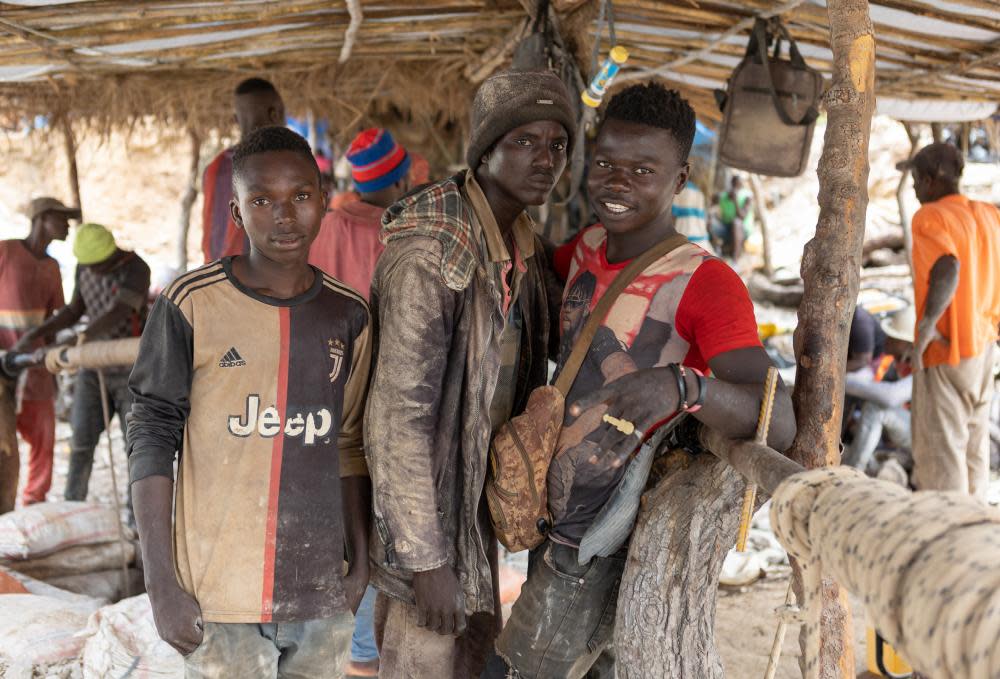
On a stopover in Mali on his way to Libya, Bakary Jammeh abandoned plans to board a boat to Italy. He had a brother there, but Jammeh became convinced he should put their reunion on hold and turn back in search of gold.
Jammeh had met a Senegalese man with a pocket full of cash and 15 grams of gold. The man was from Kédougou in southeastern Senegal, where villages with long traditions of panning for gold are quietly transforming into sprawling mining towns.
The region along the Gambia river is now awash with prospectors from across west Africa, most were subsistence farmers seeking to hit a nugget of gold and transform their lives. Villages like Bantako, where Jammeh has worked, are now untamed settlements of thousands of people, where markets sell pickaxes, helmets and moonshine alongside everyday necessities.
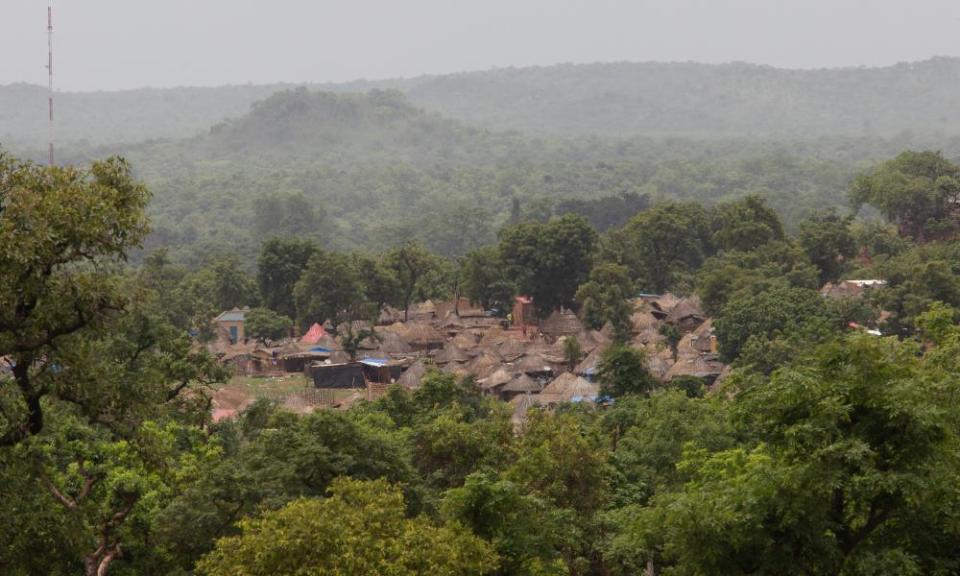
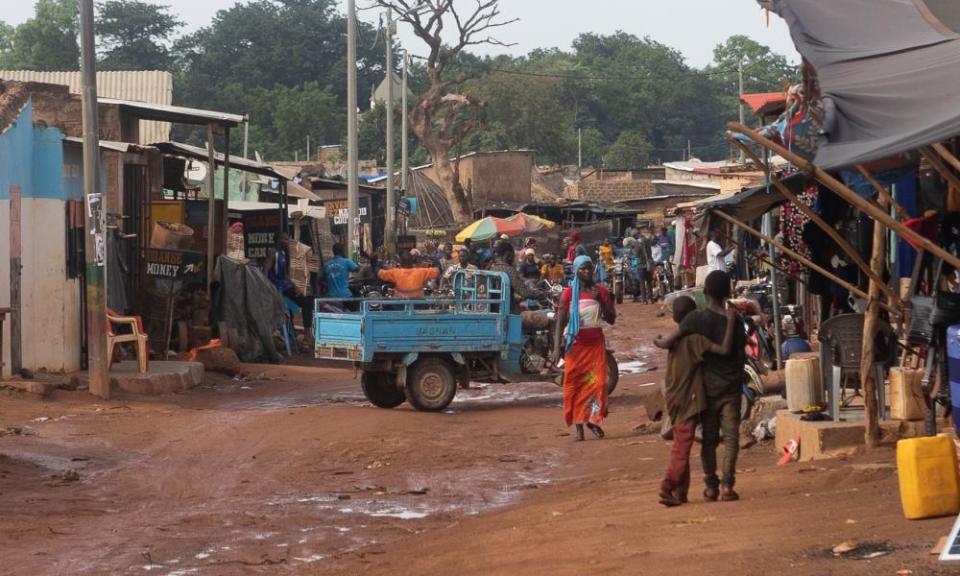


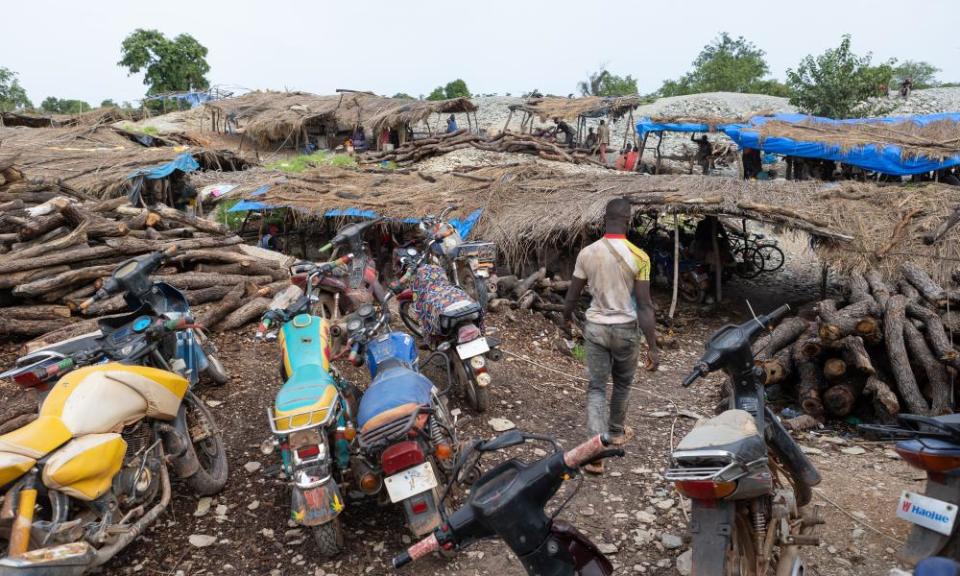
Top: Bantako, in south-east Senegal. Centre left: A busy street in Bantako, where the population has grown as people come to look for gold. Centre right: Miners on their way to work in the artisanal gold mining camps around the town. Bottom: Miners assemble around the makeshift buildings of the camp before going to work
But riches are rarely found, and Jammeh, originally from the Gambia, is still searching for his fortune 15 years after he first climbed down the crude pits bored into Bantako’s cleared bushland. Most miners can go weeks, or even months, between small discoveries, few leave. A crumb of gold that pays for a few weeks of food keeps them there. It rarely provides a permanent escape from poverty.
His own luck once brought him a find of 85g of gold, which he took straight home to his mother.
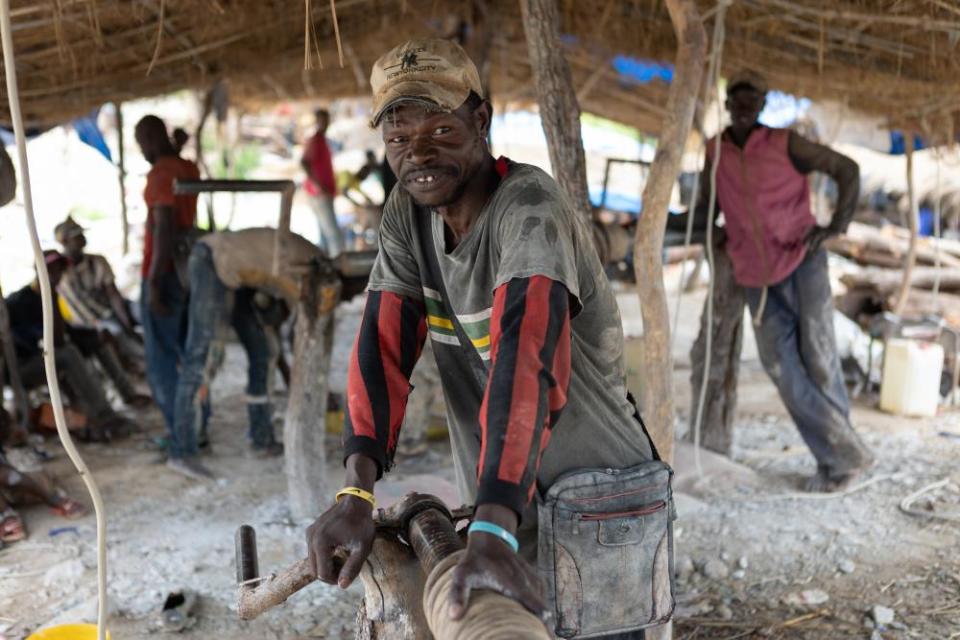
Bakary Jammeh, from the Gambia, thought he would try his luck at gold prospecting while on his way to Italy to join his brother. That was 15 years ago
Jammeh is “chief” of one of the gold pits, spending the day under stretched tarpaulin, supervising the well-practised routine that sees young men venturing 15 metres deep into the dark pits to hack away at the rock below. The shards of rock are placed into repurposed rice sacks that are pulled up by a team of men operating large pulleys.
Each haul is dumped on top of a pile that towers over the pits. Women are assigned to crush them into smaller pieces, and machines grind them down still further, making it easier to hunt for a glint of gold.

Women and children sift through smaller pieces of mined rocks in the hope of finding gold
No one takes a salary – a share of the rocks is given to the mining site’s founder, his assistants and the pit’s chief, and the rest is split between the workers, who break them up at home in the hope they can find something to sell.
Jammeh says survival depends on how close-knit a team is – how teammates support one another and share out resources.
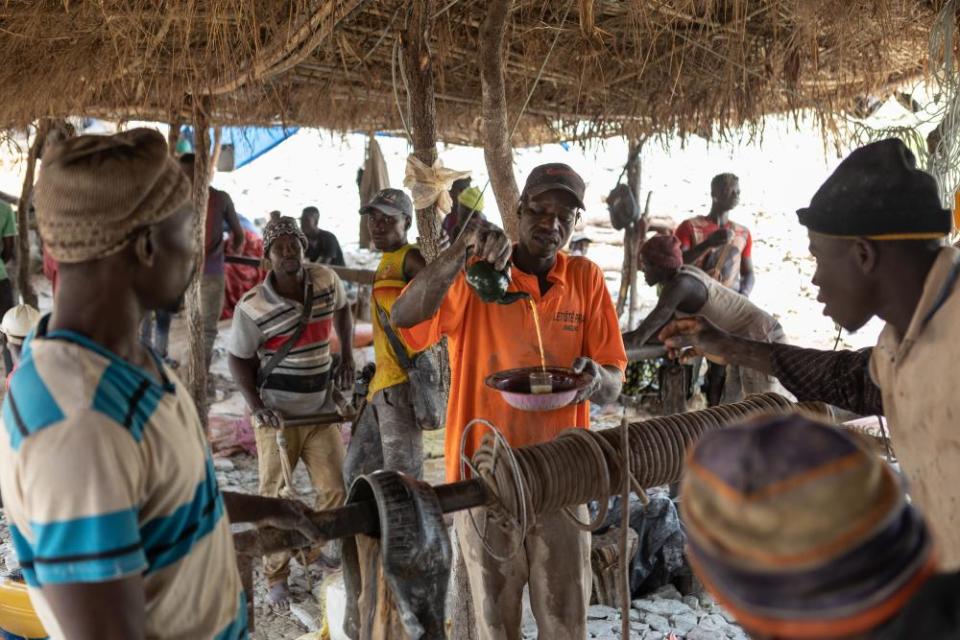
A tea break: many men have brought their families to the camps as surviving through agriculture is becoming more difficult in the region
“You survive from what you find here. If you have a good leader, every worker here will enjoy [life]. It depends on your heart. We can all suffer here, with no food, no water, nobody to come and give us five coins to buy some water, but we can survive [by sharing] from our pockets,” he says.
All you can do is take some of these stones and try to find some gold, even just a small amount to keep you going
Hawa Cisse, Bantako resident
Artisanal gold mining in Kédougou has grown rapidly since the early 2000s after the arrival of industrial mining companies, encouraged to invest by the government. It was once a way for people merely to supplement their incomes, but rising gold prices encouraged struggling farmers to base their livelihoods around searching for gold – especially those who came from abroad.
The mines operate almost constantly, from morning to past midnight, with workers often taking two shifts a day. They rarely leave Bantako, going home only for a few weeks for religious festivals or when rain makes work impossible.



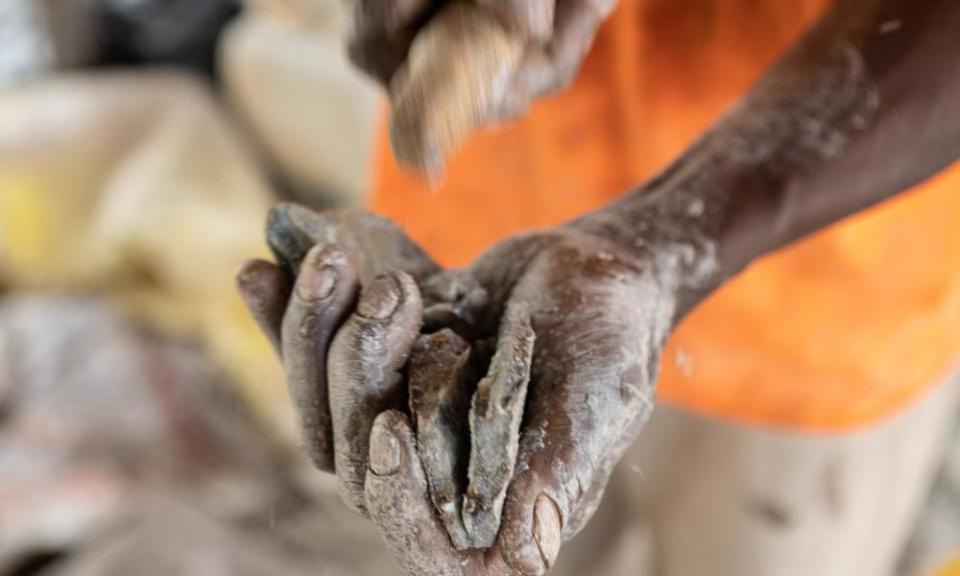
Clockwise from top left: Sediment, dug tens of metres below ground, is hauled up to the surface using pulleys; Ibrahim goes down a mine shaft; a miner splits open a rock in the hope of finding tiny gold deposits within its layers; miners haul sacks of rock to the surface.
“There’s no solidarity here, it’s a selfish place,” says Hawa Cisse, who arrived in the village with her husband in 2012. “If you have money here, life can be good but if you don’t, it’s hard. All you can do is take these stones and try to find some gold, even just a small amount to keep you going.
“But life is hard at home as well so I don’t want to go back. There is nothing you can earn there. Only if I get enough money, I’ll return and start a business.”

Driven by poverty, families come from all over west Africa to Bantako in the hope of earning a living from gold
Bantako’s sole purpose is always evident from the ubiquitous sound of pickaxes chipping at rocks and the whirr of spinning motor belts from grinding machines. The men who run them sit in a permanent dust cloud inside tin-sheet workshops that also house barrels of hazardous chemicals, such as mercury, used to speed up the process of separating the gold.
According to Paulin Maurice Toupane, a Dakar-based researcher for the Institute for Security Studies, 3.9 tonnes of mercury are used for gold mining in Kédougou each year, contributing to miners’ poor health. Mercury can cause muscle weakness and sight and hearing problems.



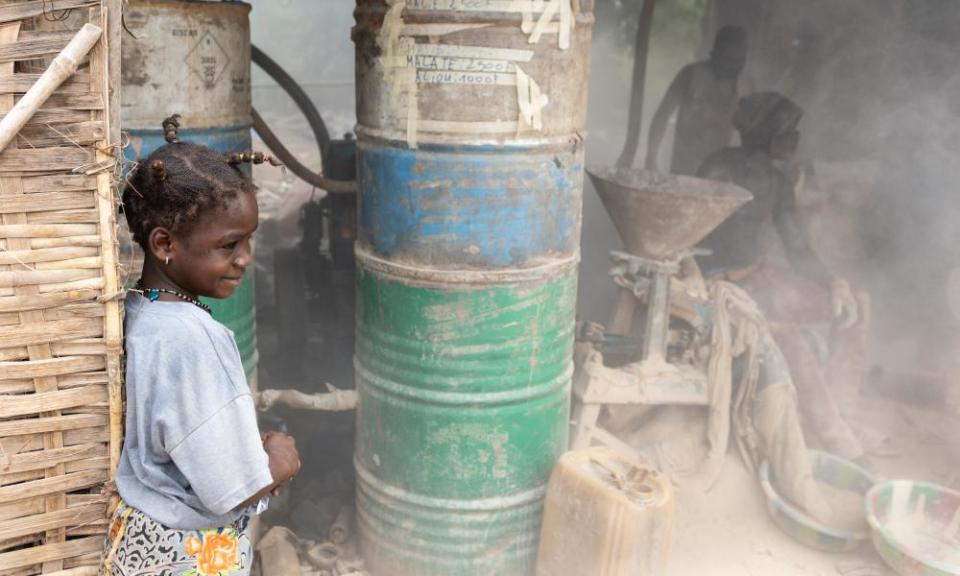
Two teenagers work in hazardous, dusty conditions. They operate machinery that breaks up the mined rock and sediment to separate any gold from it. Mercury and other dangerous chemicals such as cyanide are commonly used in the amalgam process
Toupane says that while gold brings significant income to the region – 4.2 tonnes, worth 86.6bn CFA francs (£111m) in 2018 – it is also leading to deforestation and soil damage, and puts food security at risk.
Related: Price of gold: DRC’s rich soil bears few riches for its miners – photo essay
“The local community has abandoned agriculture and fishing to be involved in artisanal gold mining, and this is a risk to food security,” he says. “There’s also a link to human trafficking and drug trafficking, and sometimes to violence.”
He says gold mining needs to be regulated and subject to greater government investment.

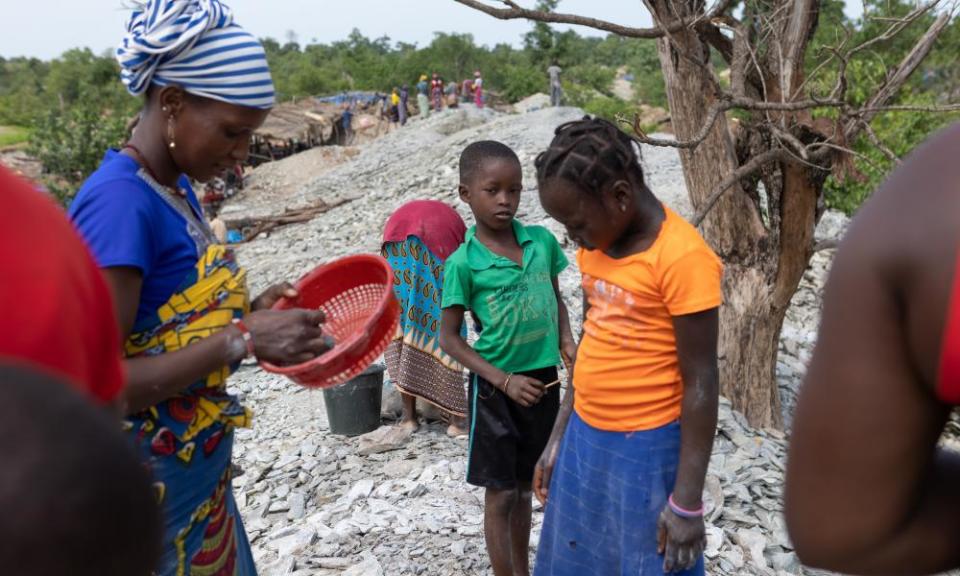

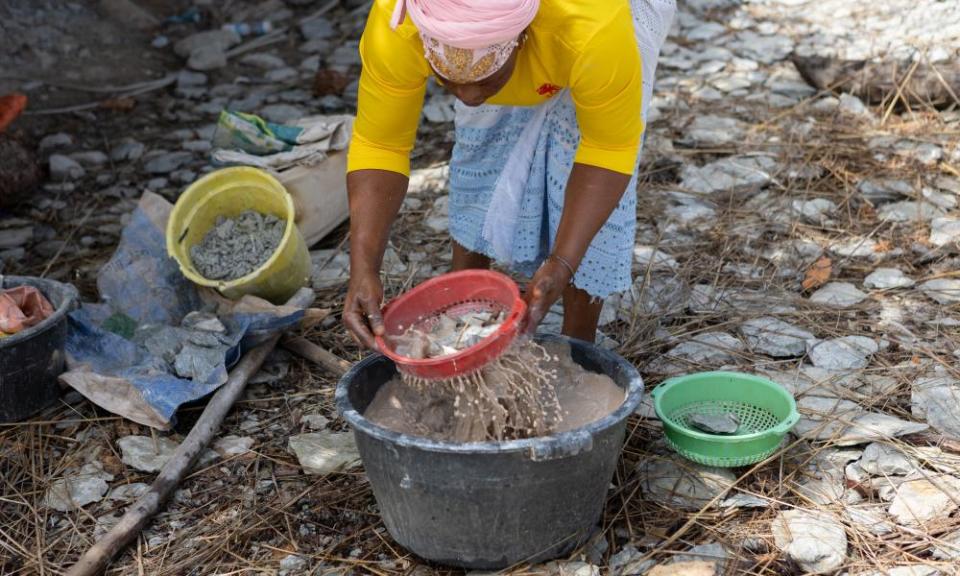
Once the rock and sediment is brought to the surface women and children join the effort to search and sift for any traces of the precious metal
In the meantime, Jammeh believes the mines will continue to grow, with more people arriving than leaving. Few, he says, are ever satisfied with what they have. “To say I have enough? No. I could have left a long time ago, but still I need more. I have 1,000, I need 2,000. I have 2,000, I need 4,000. That’s human nature. That’s in us,” he says.
“There are plenty of people here who have enough but they don’t have a good vision, to take it to their homeland and build a house. They buy a new motorcycle, a bottle, take a woman home and enjoy their money. Then [the money] is finished. Then they sell the motorcycle, and it’s back to the beginning.”

Entire families join the search through the mountain of rock to find enough gold to survive
Sign up for a different view with our Global Dispatch newsletter – a roundup of our top stories from around the world, recommended reads, and thoughts from our team on key development and human rights issues, delivered to your inbox every two weeks:

 Yahoo Movies
Yahoo Movies 
